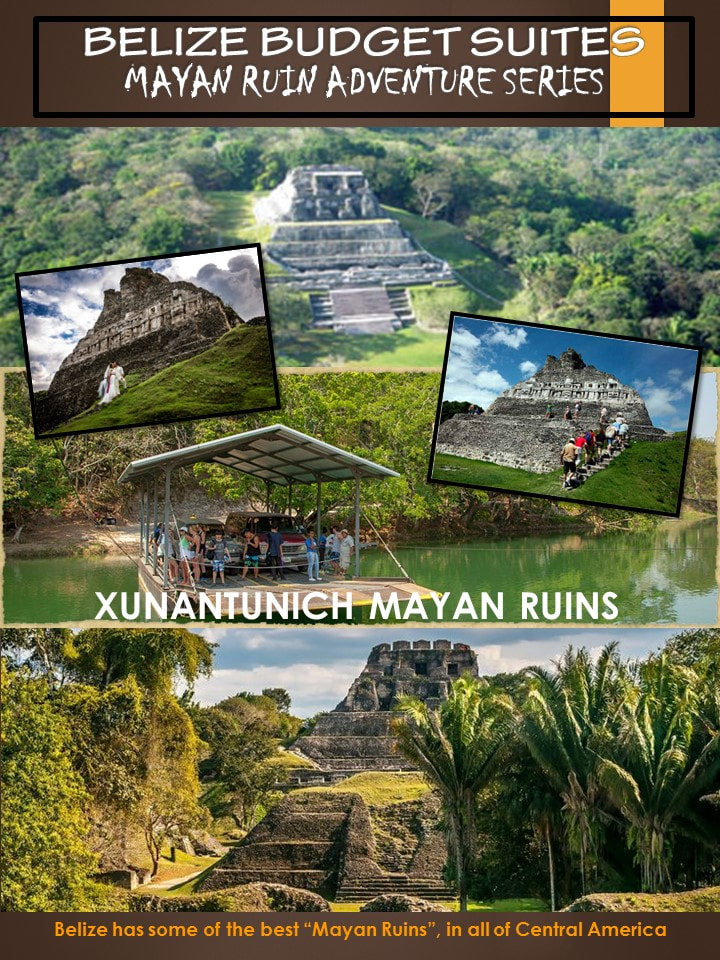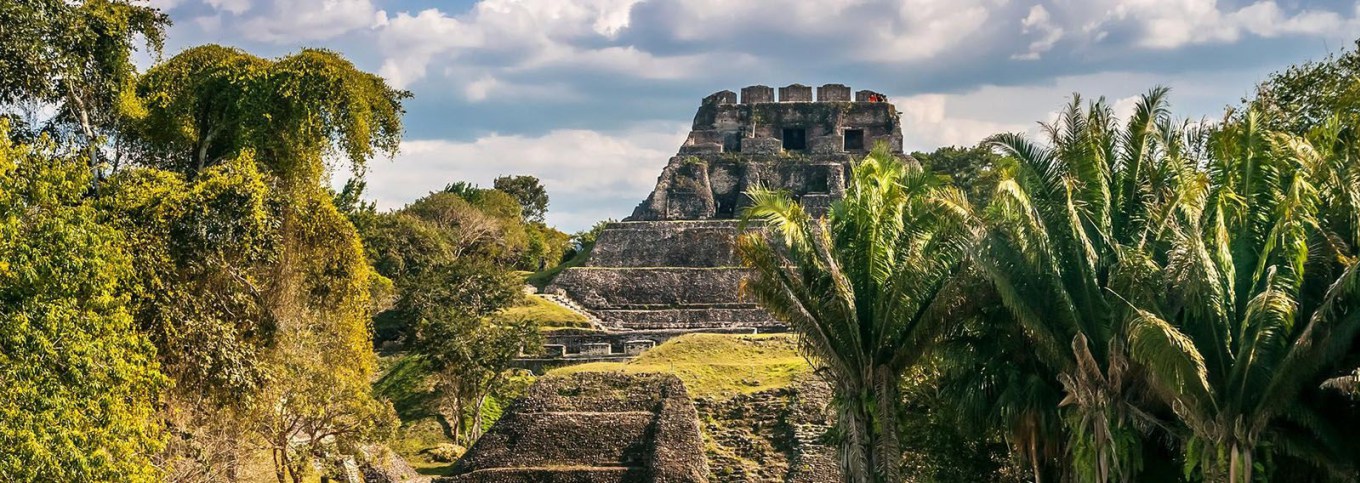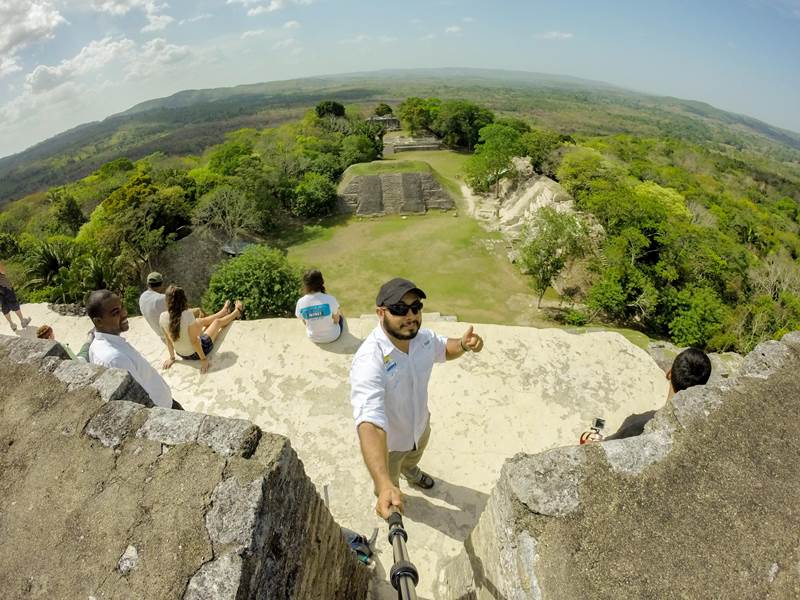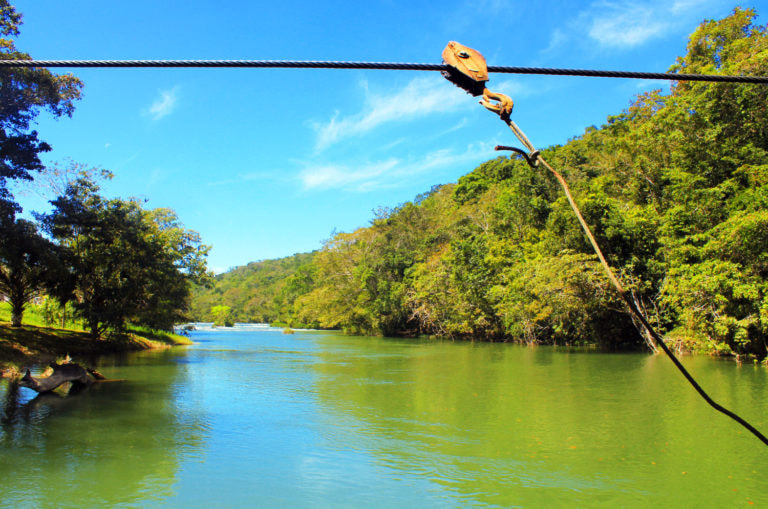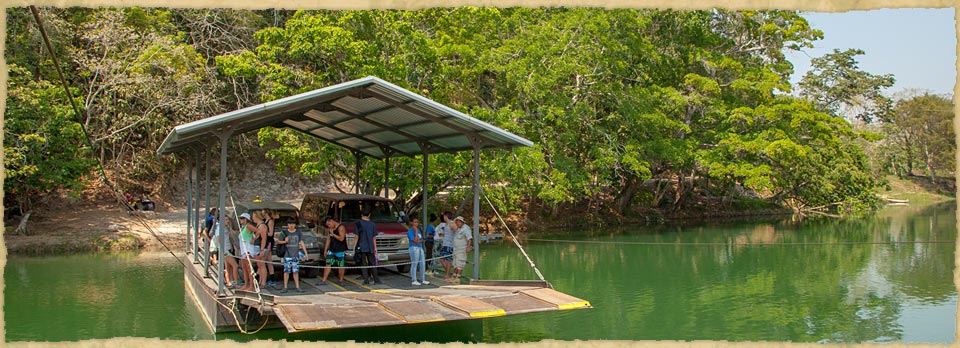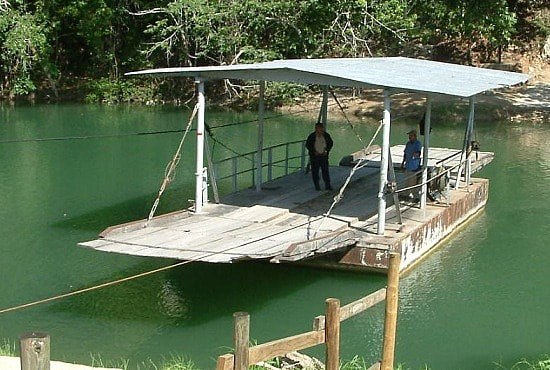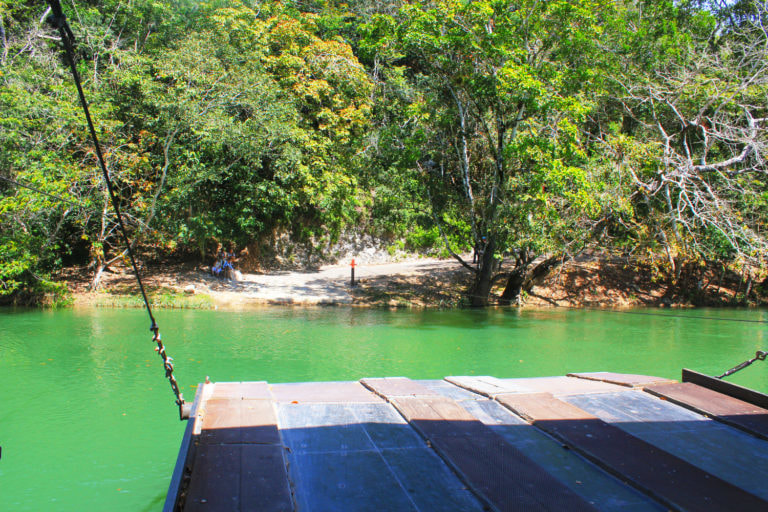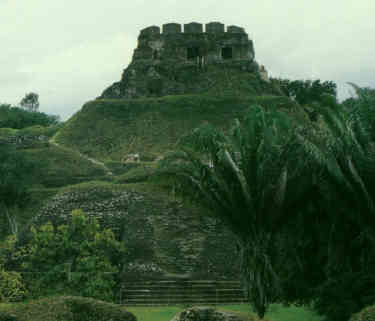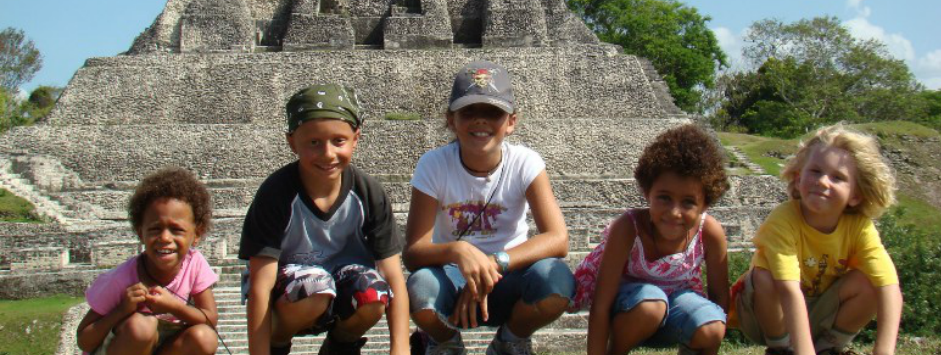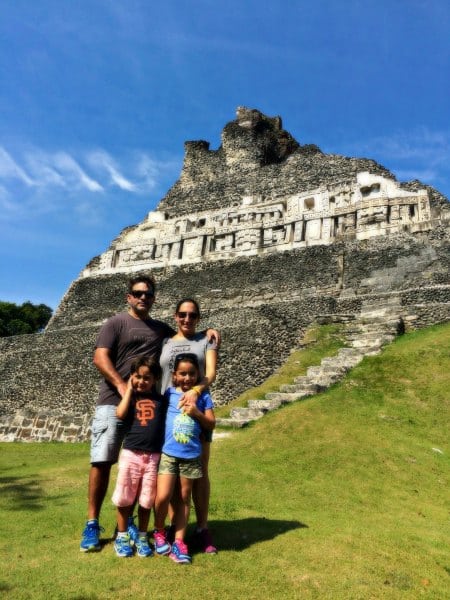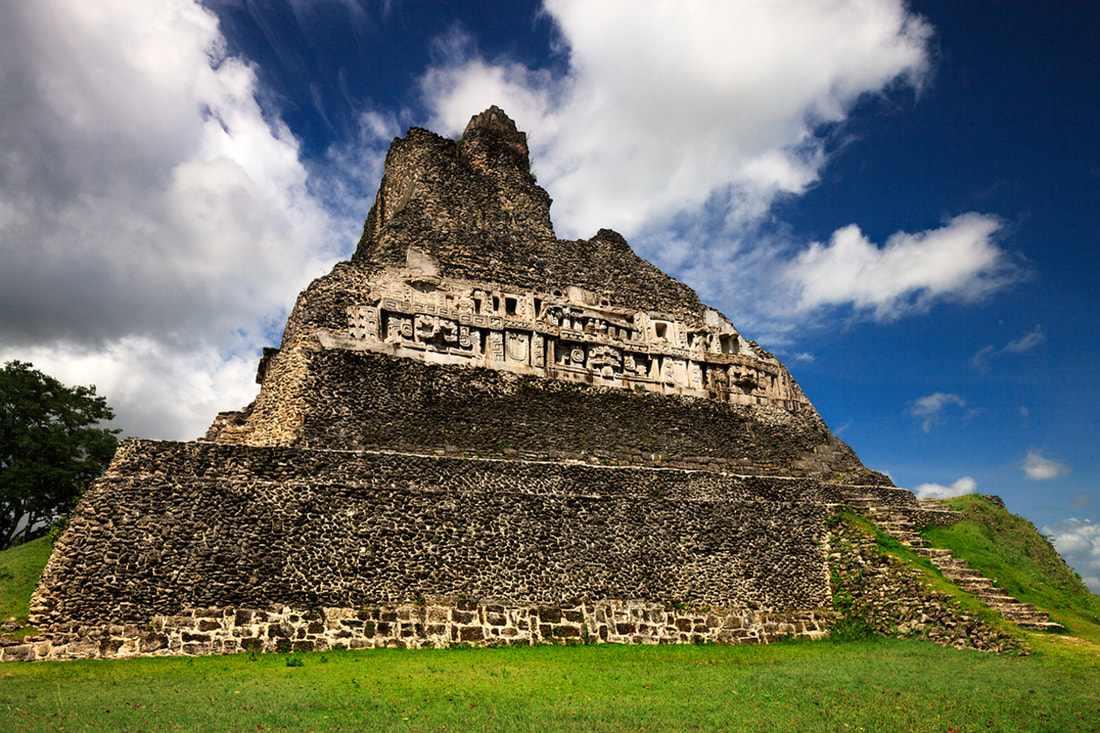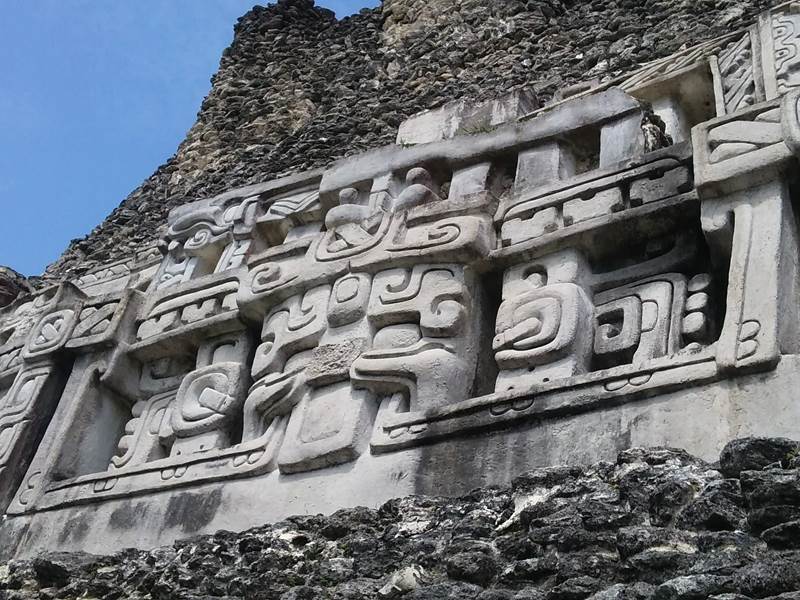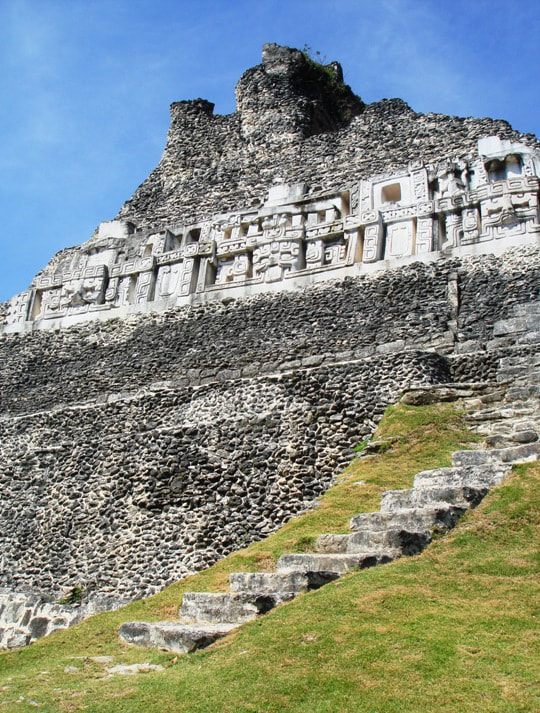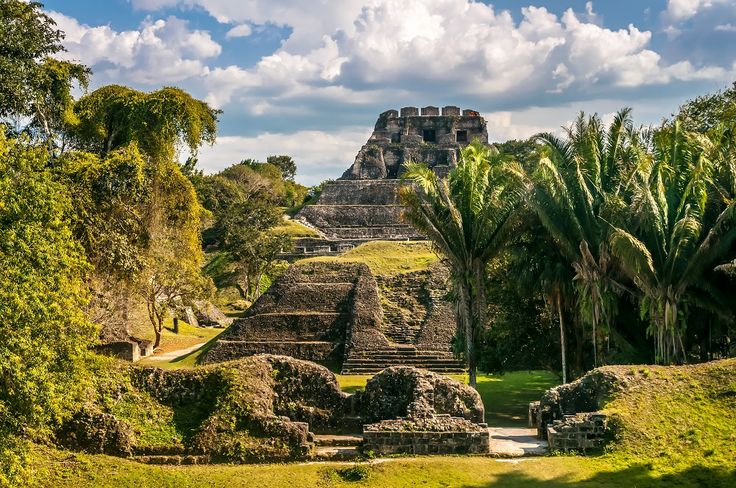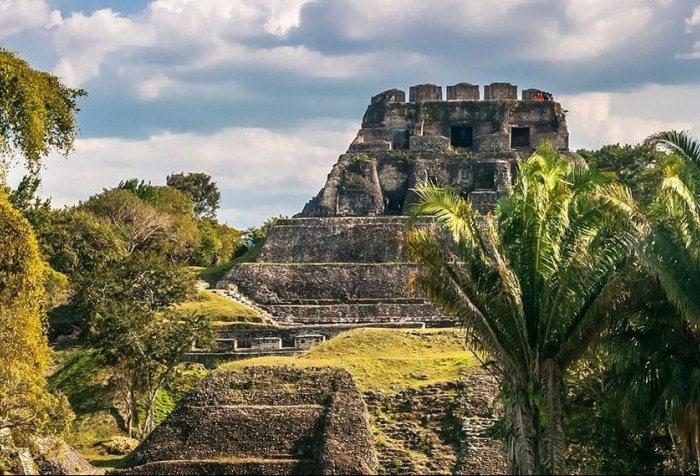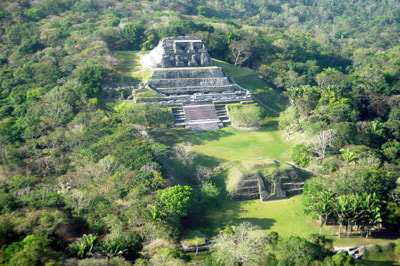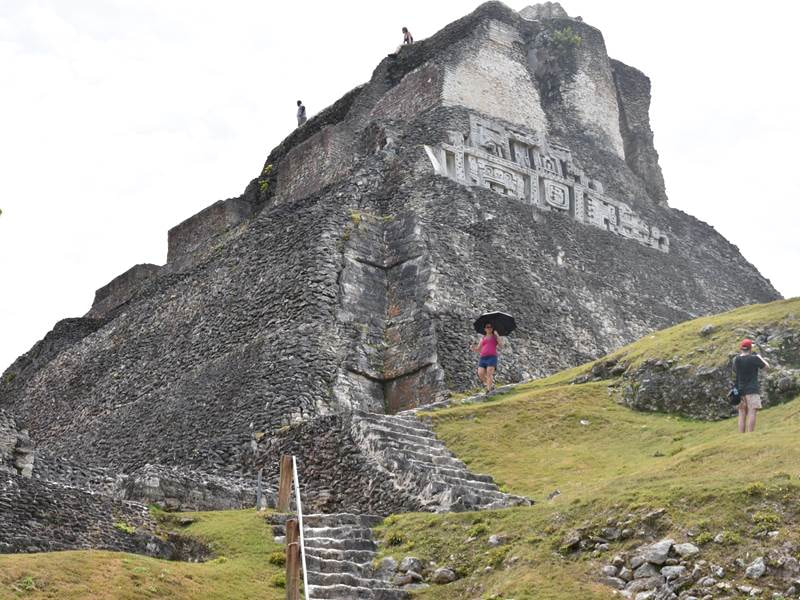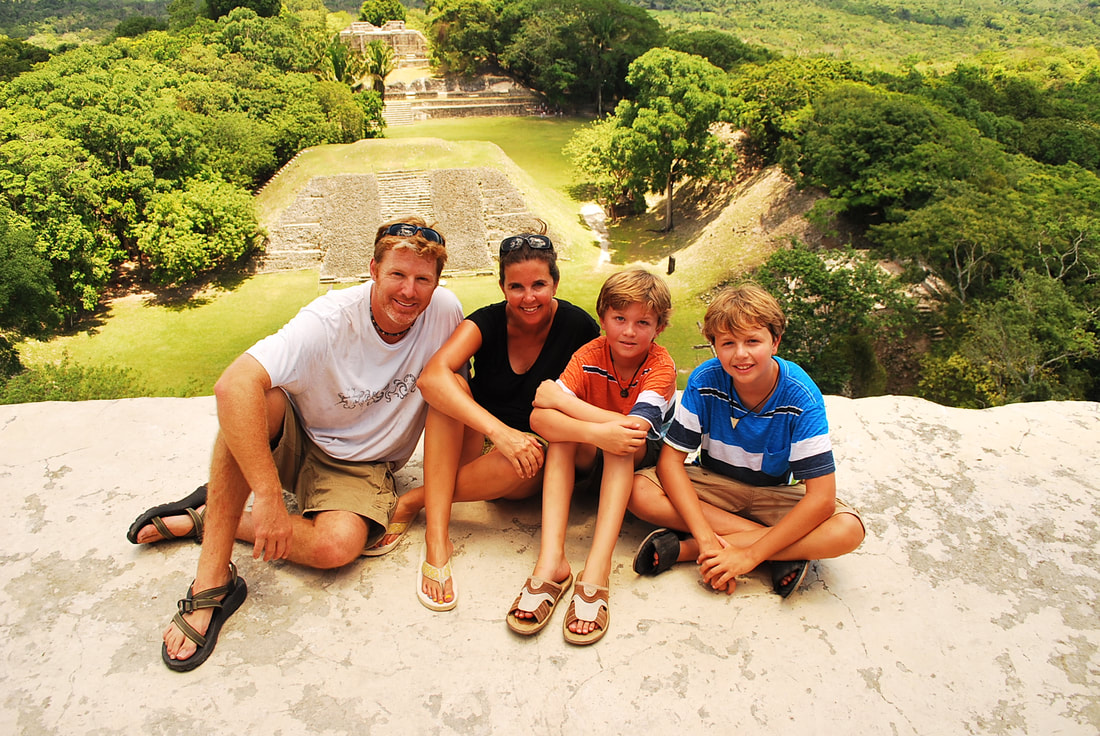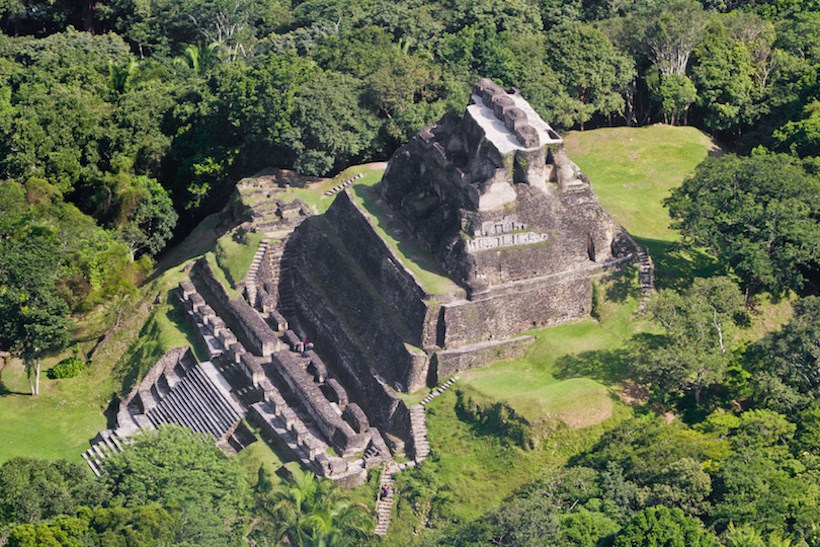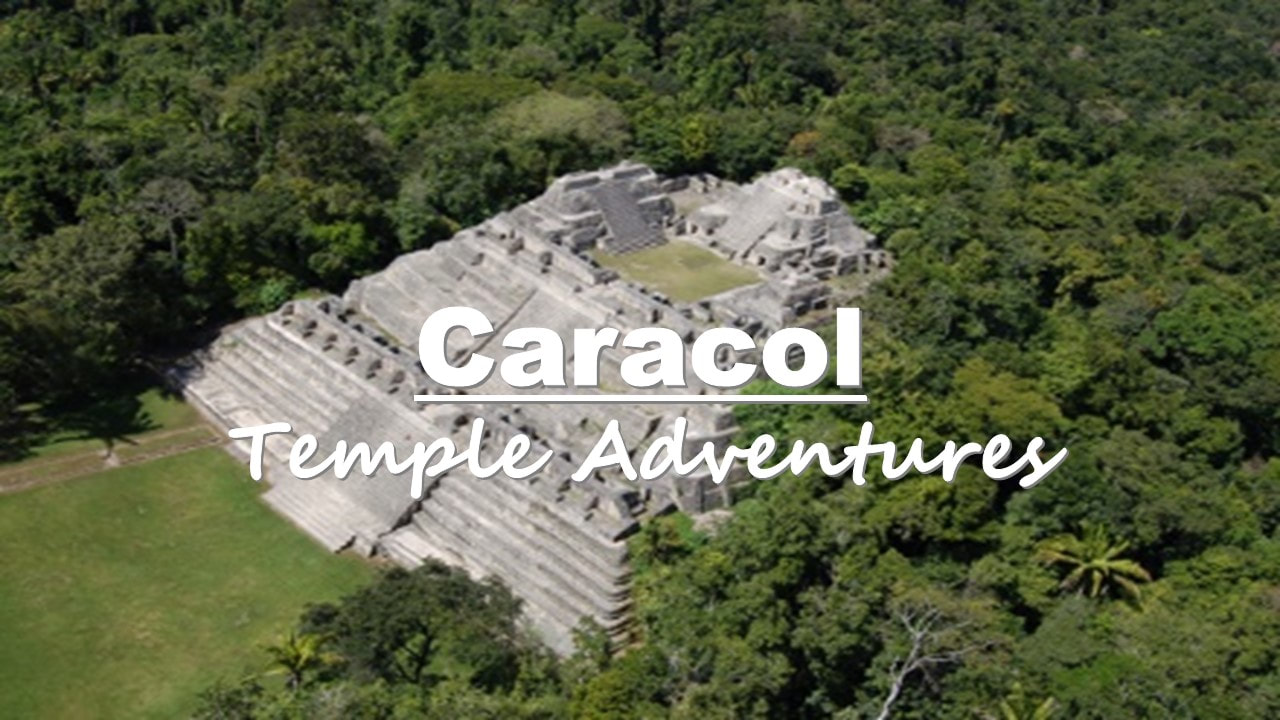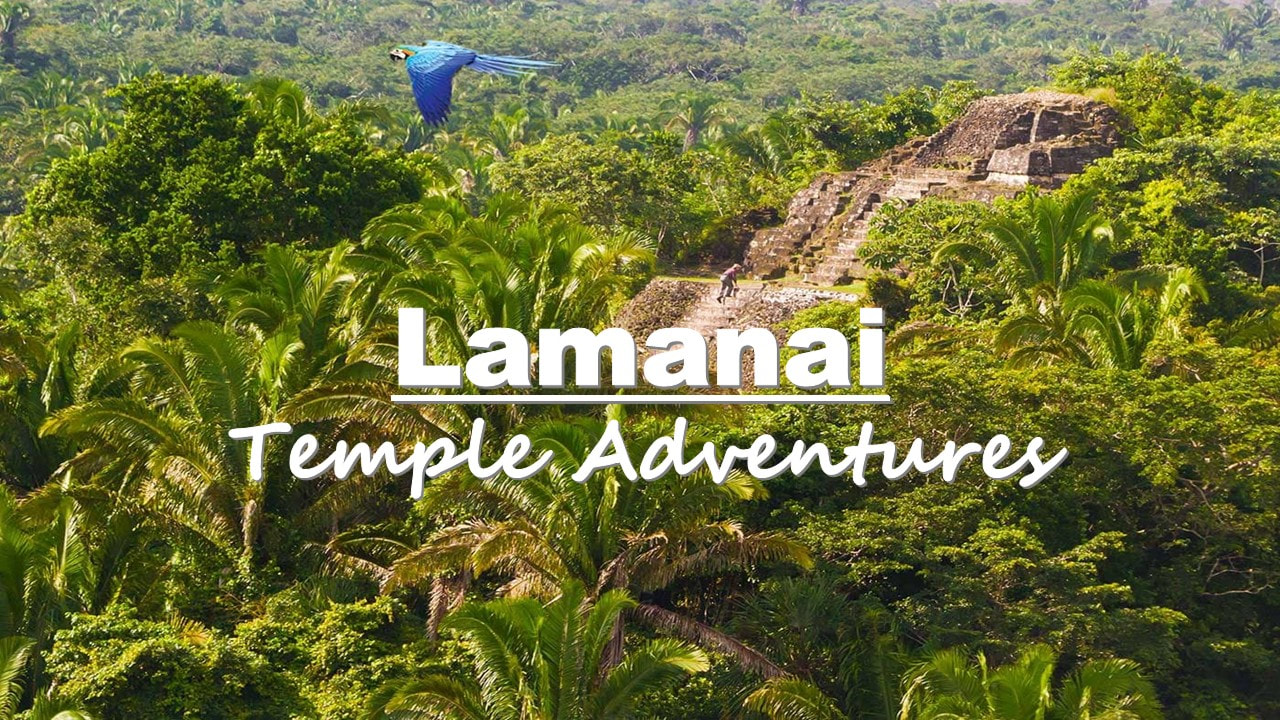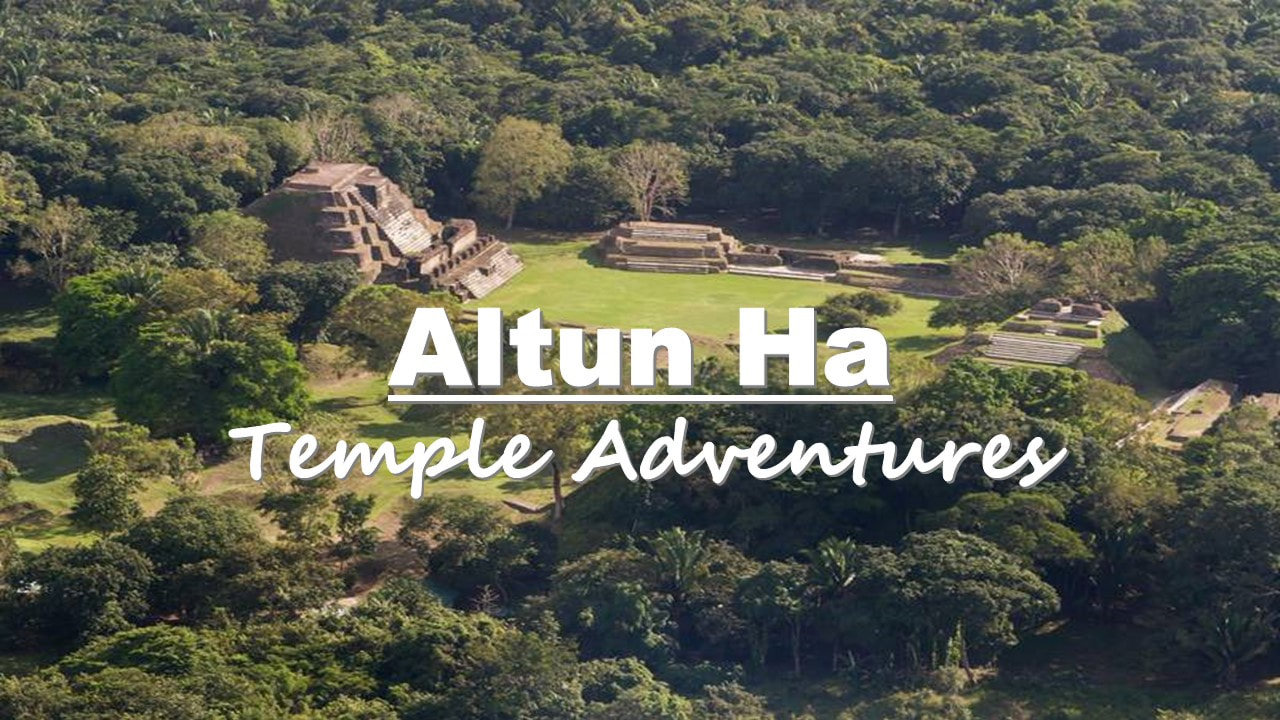Mayan Temple Adventures
Xunantunich Temple
Description: Xunantunich is located about 80 miles west of Belize City, in the Cayo District. Xunantunich is located atop a ridge, above the Mopan river, within sight of the Guatemala border. In the Mayan language, Xunantunich means, “Stone Woman”. Xunantunich was the first excavated Mayan site in Belize to be opened to the public. Though it is smaller in size, compared to other Mayan sites, it has some of the most beautiful friezes ever to be seen. Because of this and its beautiful park like surroundings, it has become a popular site for many destination weddings portraits.
Xunantunich is about a 1.5 hour drive from Belize City, and is one of the easiest Mayan ruin sites to access. Getting there is half the fun, with a hand-cranked cable ferry taking you (and vehicles) across the Mopan River. A short drive/walk up a hill and you will soon be greeted by the remnants of a city, which once stood even in the face of decline. Be sure to take your time admiring the beautiful artwork of the friezes, along the tallest main temple (“El Castillo”) building. These friezes were excavated in 1993, and since then, have been covered by a fiberglass replica (placed over the original friezes), to protect them. The core of Xunantunich occupies about 300 square miles, consisting of a series of six plazas, surrounded by more than 26 temples and palaces. The site primarily focuses on Plaza A, the dominant or main temple (El Castillo), with a height of 130 feet, and is the second tallest structure in Belize (after the temple at Caracol). Climb to the top of El Castillo and enjoy a 360-degree view of the Belizean jungle, across the border into Guatemala. As the Mayan empire began to crumble across the Yucatan, Xunantunich’s power grew. Then for some unknown reason (perhaps a sudden catastrophic event, like an earthquake), the city was completely deserted. |
Xunantunich Mayan Ruins
Your journey takes you to the Belize mainland where you will visit the Xuantunich Mayan Ruins. This tour is typically coupled with another half day tour, making this mainland activity a full-day tour.
Take the Western highway for approximately 70 miles, until you reach Santa Elena town. Take the road that leads to Succotz village which is just before reaching Benque Viejo del Carmen. At this point you should see a ferry on the right hand side of the road and a sign for the Maya temple. You cross the ferry free of charge and Xunantunich is a three minute drive from there. Check out our full article devoted to Xunantunich Mayan Ruins. Xunantunich means “maiden of the rock” or “stone woman” in Maya, and is situated on the Western Highway across the river from the village of San Jose Succotz. It can be reached by ferry daily between 8 am and 5 pm. This site is less than one mile from some lovely rapids of the Mopan River and provides an impressive view of the entire river valley. Xunantunich is a Classic Period ceremonial center. The site core occupies only 300 square meters but the periphery covers several square kilometers On the main palace building is an astronomical carved frieze. El Castillo tops off the peak at XunantunichThe highest ruin is 133 feet tall, the second tallest temple in all of Belize. Well-preserved sun god masks decorate one side of the structure. Six major plazas, more than 25 temples and palaces and a new museum are just some of the reasons why Xunantunich is one of the most visited sites. The Belize Tourism Development Project has invested over half a million dollars to fully excavate the site and make it more visitor-friendly. |
PHOTO GALLERY
|
|
|

